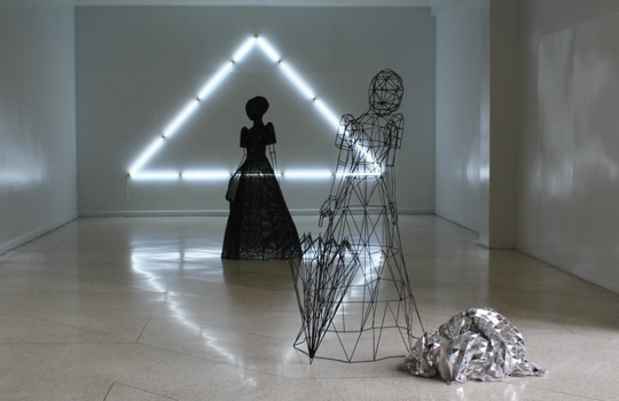Patricia Perez Eustaquio “The Future That Was”
Tyler Rollins Fine Art

This event has ended.
Tyler Rollins Fine Art presents Patricia Perez Eustaquio in her first solo exhibition in the United States, The Future That Was. The show is a continuation of the artist’s solo exhibition of the same title, curated by Patrick Flores and recently on view at the Jorge B. Vargas Museum in
Quezon City, Metro Manila, the Philippines (July 23 - August 24, 2013).
Born in 1977 and based in Manila, Patricia Perez Eustaquio is one of the leading Filipino artists of her generation. Notions of craft and design are central to her artistic practice, and she makes use of a wide range of materials – ranging from oil on canvas to metal, wood, fabric, rattan, glass, and resin – exploring their expressive possibilities and the history of their role in cultural production. She explains: “Certain materials require specific methods of fabrication, and if you look at my practice, it has always been this exploration of how I can take different forms of craft and remake them into objects that form part of a narrative.”
The works in The Future That Was exhibitions in New York and Manila are reflections upon the structures and ideas that produce, frame and promote art and design. Eustaquio weaves an open-ended narrative that examines notions of innovation and novelty, timeliness and timelessness, particularly as they relate to the language of design and fashion. She is interested in how material, fabrication, and intention combine to form an object that then takes on a life of its own. “If you survey our visual culture,” she writes, “we are confronted with a fabricated reality – an environment full of objects, each of which have their own histories, have their own lives, and I suppose it is this ‘life’ from start to finish that really interests me. This ‘life’, this object represents function, aesthetic, desire.”
Eustaquio follows the life of the artwork “from crafting it to wanting it,” slyly playing with the expectations of the audience, with its spirit of aspirational consumerism and approach to the artwork as an object of desire and an embodiment of fashion. She is conscious of the way artistic style is linked to fashion in that both are subject to rapidly changing tastes, with the avant-garde quickly becoming passé. There is a continuous play between the futuristic and the nostalgic, with both combining into a certain “nostalgia of the future” as we look back on the utopias of former times. Eustaquio’s geometric canvases and sculptural busts reference Modernist abstraction, Cubism, etc., while the mid-twentieth century’s Space Age aesthetic is evoked by forms structured from geometric patterns reminiscent of geodesic domes. Yet older traditions, and in particular the Philippines’ Spanish colonial heritage, comes into play with the use of certain iconic motifs: the distinctive silhouette of the terno, the classic Filipino dress dating from the colonial period; and fragments of solihiya, the woven rattan matting often used for seat cushions. The human forms that appear throughout the exhibition are constructed from these two thematic strands, the Modern and the Colonial; they function as alter-egos of the viewer, who is perhaps contemplating the artworks or perhaps just posing with his or her aspirational objects of fashion. The Future That Was suggests a culture of striving and waiting, of reworking and
refiguring, of gazing out ahead in anticipation for that which we may already have, or that which may have already passed us by.
Media
Schedule
from September 12, 2013 to October 19, 2013
Opening Reception on 2013-09-12 from 18:00 to 20:00